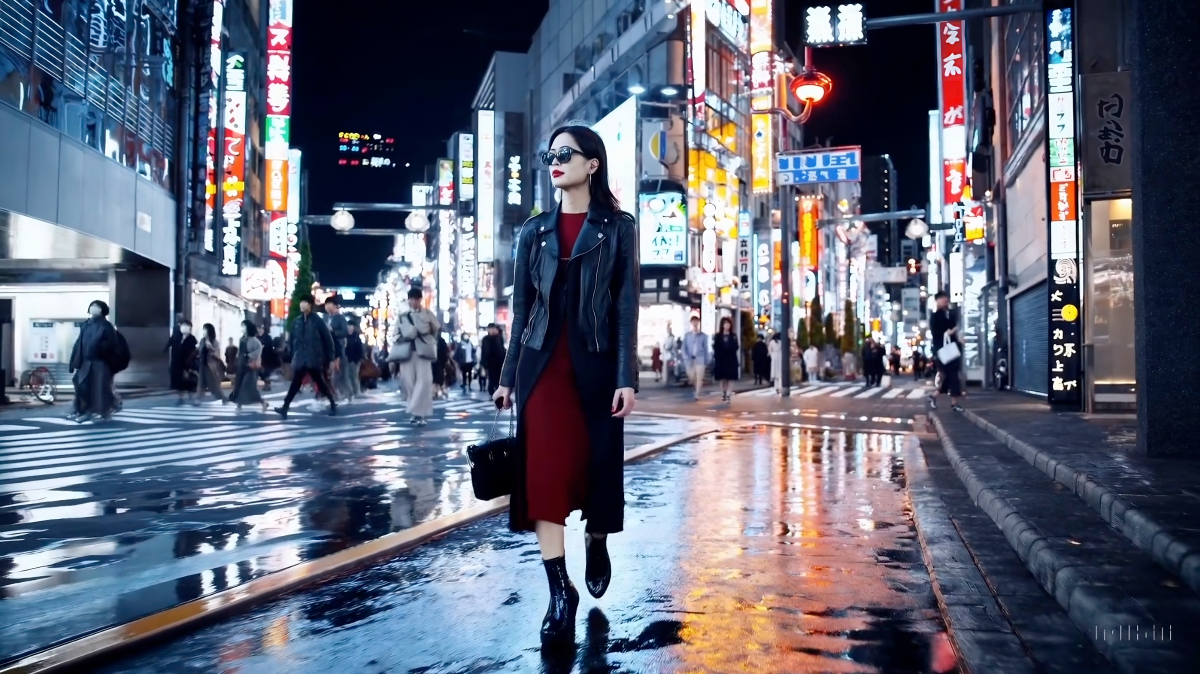OpenAI Unveils Sora: AI Video Generation Model
Główne pojęcia
OpenAI introduces Sora, a video generation model with advanced language understanding capabilities, aiming to create realistic videos from text prompts.
Streszczenie
OpenAI's latest model, Sora, is a generative AI that creates high-quality videos based on text descriptions or images. It can extend existing clips and offers various styles, although it still has limitations in simulating complex scenes accurately. Despite its impressive capabilities, OpenAI acknowledges the potential for misuse and is working on safeguards before making it widely available.
Dostosuj podsumowanie
Przepisz z AI
Generuj cytaty
Przetłumacz źródło
Na inny język
Generuj mapę myśli
z treści źródłowej
Odwiedź źródło
techcrunch.com
OpenAI's newest model Sora can generate videos -- and they look decent | TechCrunch
Statystyki
Sora can generate 1080p movie-like scenes with multiple characters and different types of motion.
The model was trained on approximately 10,000 hours of high-quality video data.
OpenAI is developing tools to detect videos generated by Sora.
Cytaty
"The model understands not only what the user has asked for in the prompt but also how those things exist in the physical world." - OpenAI
"We cannot predict all of the beneficial ways people will use our technology, nor all the ways people will abuse it." - OpenAI
Kluczowe wnioski z
by Kyle Wiggers o techcrunch.com 02-15-2024
https://techcrunch.com/2024/02/15/openais-newest-model-can-generate-videos-and-they-look-decent/
Głębsze pytania
How can OpenAI ensure responsible use of Sora despite acknowledging potential misuse
OpenAI can ensure responsible use of Sora despite acknowledging potential misuse by implementing several strategies. Firstly, they can continue working with experts to identify and address any vulnerabilities or exploits in the model. This proactive approach will help mitigate potential risks associated with malicious use. Additionally, OpenAI can develop tools that enable users to verify whether a video was generated by Sora, thus promoting transparency and accountability.
Furthermore, OpenAI should engage policymakers, educators, and artists to gather feedback on the ethical implications of using AI-generated content like Sora. By collaborating with stakeholders from diverse backgrounds, OpenAI can better understand concerns related to privacy, intellectual property rights, and misinformation. This multi-stakeholder approach will facilitate the development of guidelines for responsible usage of AI-generated videos.
Lastly, OpenAI's decision not to make Sora generally available demonstrates their commitment to preventing widespread misuse. By limiting access to the model and incorporating provenance metadata in generated outputs if it becomes publicly accessible in the future, OpenAI can track the origin of content created using Sora. This measure enhances traceability and helps deter unauthorized or harmful uses of the technology.
What are the implications of advanced AI models like Sora on creative industries
The implications of advanced AI models like Sora on creative industries are profound and multifaceted. These models have the potential to revolutionize how content is produced across various sectors such as film production, advertising, gaming, virtual reality experiences, and more.
One significant implication is increased efficiency in content creation processes. AI video generation models like Sora can automate certain aspects of visual storytelling by quickly generating scenes based on textual descriptions or still images. This automation could streamline pre-production tasks such as storyboarding or prototyping while also reducing costs associated with traditional animation or filming techniques.
Moreover, these advanced AI models may democratize access to high-quality visual content creation tools. Smaller studios or independent creators who may not have had access to extensive resources previously could leverage AI-generated videos like those produced by Sora to enhance their projects creatively without compromising quality.
However, there are also challenges that creative industries may face due to reliance on AI video generation models like Sora. Concerns around originality and artistic expression arise when utilizing automated tools for content creation since there is a risk of homogenization or lack of human touch in the final output.
Overall,
the impact
of advanced
AI models
like
Soraincreativeindustriesisbothdisruptiveandtransformative,presentingopportunitiesforinnovationwhilealsorequiringcarefulconsiderationofethicalandartisticimplications.
How might the development of AI video generation models impact storytelling in various media formats
The development
of AIVideogenerationmodels,suchasSoralikelytohavea significantimpactonstorytellinginvariousmediaformats.Thesemodelsenablecontentcreatorstotranslate textintovisualnarrativesquicklyandeffectively,enrichingthestorytellingexperienceacrossdifferentplatformsandscreen-basedmediums.
Intraditionalmediaformatssuchasfilm,tvshows,andadvertisements,AIvideogenerationmodelscouldacceleratethepre-productionprocessbyautomatingthecreationoffirstdraftsofvisualscenesbasedontextualscripts.Thisstreamliningeffectcouldpotentiallyspeedupproductiontimelinesandreducetheresourcestypicallyrequiredforconceptdevelopmentandvisualization.
Additionally,theavailabilityofAIVideoGenerationtoolssuchasSoramayencourageexperimentationwithnewnarrativestructuresandvisualstyles.Creatorscanexploreunconventionalapproachesto storytellingbyleveragingthemodel'sabilitytogeneratediversevideosinstylesrangingfromphotorealismtoanimation.Thisflexibilityopensupavenuestoexploreinnovativeformsofstorytellingthatpushtheboundariesoftraditionalmediaparadigms.
However,theintegrationofAIVideoGenerationmodelsintostorytellingprocessesalsoraisesquestionsaboutauthenticityandhumancreativity.Whilethesemodelscanenhancetheworkflowefficiencyandoffernewpossibilitiesforvisualexpression,it'sessentialtomaintainabalancebetweentechnologicalassistanceandinherentlyhumanqualitiesofsensibilityemotion,andoriginality.StorytellerswillneedtofindwaystoincorporateAIGeneratedcontentthoughtfullywithoutcompromisingthepersonalvoiceandvisionthatmakestheirworkunique.Theevolutionoftoolslik eSorawilllikelysparkdebatesaroundtheroleoftechnologyinstorytellingandexplorationofsolutionsforensuringaharmoniouscoexistencebetweenmanuallycreatedcontentandanewgenerationo ftechnologicallyaidednarratives
0
